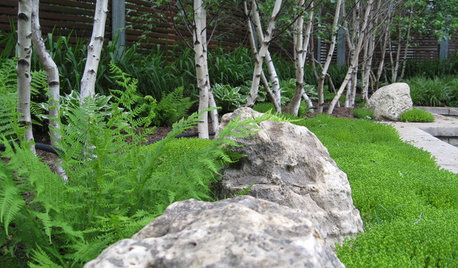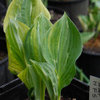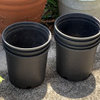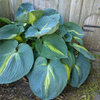New pics of suspected HVX hostas
esther_b
14 years ago
Related Stories

GARDENING FOR BUTTERFLIESButterfly Gardening: Delight the Eyes With Living Sculptures
Surprise and thrill with a garden that attracts magical winged creatures, bringing color, movement and life
Full Story
LANDSCAPE DESIGNFor Garden Drama, Consider the Lowly Boulder
A boulder can be a thing of beauty in the landscape. Here are 10 ways to display them to full effect
Full Story
GARDENING GUIDESBackyard Birds: Invite Entertaining Hummingbirds Into Your Garden
Hummingbirds — unique to the Americas — zip through open landscapes seasonally or year-round. Here’s how to attract them
Full Story
DREAM SPACESJust a Few Things for the Dream-Home Wish List
A sunken hot tub, dedicated game room, tree house, hidden wine cellar and more. Which of these home luxuries would you like best?
Full Story
VACATION HOMESHouzz Tour: Childhood Memories Shape a Lakeside Cottage
A Canadian man couldn’t salvage his grandfather’s cottage, but he keeps the family connection alive with a new structure in the same space
Full Story
LANDSCAPE DESIGNThe Case for Functional Garden Design
Clear away the decoration to give every area of your garden a clear function
Full Story
GARDENING GUIDES6 Plants That Beat Butterfly Bush for the Wildlife Draw
It's invasive, a nonnative and a poor insect magnet. Check out these better alternatives to butterfly bush in the garden
Full StorySponsored







thisismelissa
paul_in_mn
Related Discussions
More HVX questiions (pics)
Q
Don't ever plant a hosta where one had HVX?
Q
A question about HVX and a couple of my hostas
Q
New hosta lover - please tell me this isn't HVX
Q
valtorrez
schmoe
hostadom
ctopher_mi
coralb
Babka NorCal 9b
esther_bOriginal Author
thisismelissa
ctopher_mi
thisismelissa
esther_bOriginal Author
thisismelissa
ken_adrian Adrian MI cold Z5
esther_bOriginal Author
valtorrez
User